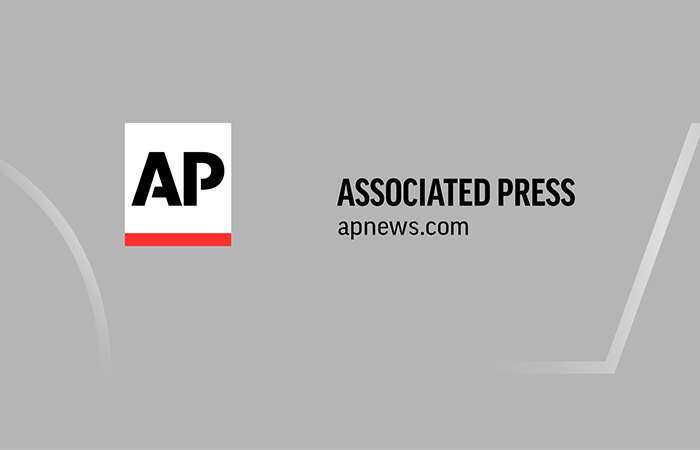The Pulse of a Nation: Health, Science, and the Fight for Progress
March 9, 2025, 4:12 am
In the heart of the Vatican, a quiet storm brews. Pope Francis, a beacon of hope for millions, battles double pneumonia. His condition is precarious. Doctors tread carefully, weighing every breath. The pope’s age adds gravity to the situation. Three weeks in the hospital is a long time for anyone, especially for a man who has dedicated his life to service. The prognosis remains guarded. Stability is a fragile friend.
The Vatican reports some improvement. The pope’s voice, though weaker, still carries a message of gratitude. This is a flicker of light in a dim room. Yet, the road to recovery is steep. Each day in the hospital could mean a month of rehabilitation. The body is a complex machine. Severe pneumonia doesn’t just attack the lungs; it can leave scars on the mind and spirit.
Meanwhile, across the ocean, another battle rages. In Washington, D.C., the “Stand Up for Science” rally unfolds. Scientists, doctors, and advocates gather, united by a common cause. They stand against funding cuts that threaten medical advancements. The stakes are high. Alzheimer’s, diabetes, cancer—these are not just words; they are battles fought daily by countless individuals.
Former NIH Director Francis Collins speaks passionately. He paints a picture of potential lost. The momentum in science is palpable, yet it hangs by a thread. The crowd listens intently. They know the importance of research. They understand that progress is not guaranteed. It requires investment, support, and unwavering commitment.
In the shadow of the Lincoln Memorial, demonstrators raise their voices. Signs proclaim their message: “In evidence we trust.” The atmosphere is electric. Scientists, patients, and students chant together. They demand attention for their cause. The government’s stance on science has shifted. It feels like a step backward.
Astronomer Phil Plait captures the crowd’s frustration. He speaks of an “aggressively anti-science government.” The words resonate. The crowd responds with boos and cheers. They are not just fighting for funding; they are fighting for the future.
Among the speakers is Emily Whitehead, a living testament to the power of science. Her story is one of survival. At five, she faced hospice care. Today, she stands healthy, a warrior against cancer. Her journey embodies hope. It illustrates the tangible impact of scientific research.
The rally isn’t confined to D.C. Cities across the nation join in solidarity. From Atlanta to Philadelphia, voices rise in unison. The message is clear: science matters. It saves lives. It shapes our understanding of the world.
Doctors like Cedric Bien-Gund share their concerns. They advocate for marginalized communities. The cuts in funding don’t just affect research; they ripple through society. Fear and silence loom over patients. The medical community feels the weight of these challenges.
As the rallies unfold, the contrast between the pope’s health crisis and the fight for scientific funding becomes stark. One represents the fragility of life; the other, the relentless pursuit of progress. Both are intertwined. Health is a universal concern. It transcends borders, beliefs, and politics.
The pope’s battle is personal, yet it echoes a larger narrative. His health crisis serves as a reminder of our shared humanity. It compels us to reflect on the importance of compassion and care. In a world where division often reigns, the pope’s struggle unites people in prayer and hope.
On the other hand, the “Stand Up for Science” movement embodies collective action. It is a rallying cry for those who believe in the power of knowledge. It emphasizes that science is not just a field of study; it is a lifeline.
As the sun sets on the rallies, the future remains uncertain. The pope’s recovery is a waiting game. The scientists’ fight for funding is ongoing. Both require patience, resilience, and faith.
In the end, health and science are two sides of the same coin. They shape our lives, our societies, and our futures. The pope’s health reminds us of our vulnerability. The rallies remind us of our strength. Together, they weave a narrative of hope, urging us to cherish life and champion progress.
As we navigate these turbulent waters, let us remember: every breath counts. Every discovery matters. The pulse of a nation beats in the hearts of its people. It is a call to action, a plea for compassion, and a testament to the enduring spirit of humanity.
The Vatican reports some improvement. The pope’s voice, though weaker, still carries a message of gratitude. This is a flicker of light in a dim room. Yet, the road to recovery is steep. Each day in the hospital could mean a month of rehabilitation. The body is a complex machine. Severe pneumonia doesn’t just attack the lungs; it can leave scars on the mind and spirit.
Meanwhile, across the ocean, another battle rages. In Washington, D.C., the “Stand Up for Science” rally unfolds. Scientists, doctors, and advocates gather, united by a common cause. They stand against funding cuts that threaten medical advancements. The stakes are high. Alzheimer’s, diabetes, cancer—these are not just words; they are battles fought daily by countless individuals.
Former NIH Director Francis Collins speaks passionately. He paints a picture of potential lost. The momentum in science is palpable, yet it hangs by a thread. The crowd listens intently. They know the importance of research. They understand that progress is not guaranteed. It requires investment, support, and unwavering commitment.
In the shadow of the Lincoln Memorial, demonstrators raise their voices. Signs proclaim their message: “In evidence we trust.” The atmosphere is electric. Scientists, patients, and students chant together. They demand attention for their cause. The government’s stance on science has shifted. It feels like a step backward.
Astronomer Phil Plait captures the crowd’s frustration. He speaks of an “aggressively anti-science government.” The words resonate. The crowd responds with boos and cheers. They are not just fighting for funding; they are fighting for the future.
Among the speakers is Emily Whitehead, a living testament to the power of science. Her story is one of survival. At five, she faced hospice care. Today, she stands healthy, a warrior against cancer. Her journey embodies hope. It illustrates the tangible impact of scientific research.
The rally isn’t confined to D.C. Cities across the nation join in solidarity. From Atlanta to Philadelphia, voices rise in unison. The message is clear: science matters. It saves lives. It shapes our understanding of the world.
Doctors like Cedric Bien-Gund share their concerns. They advocate for marginalized communities. The cuts in funding don’t just affect research; they ripple through society. Fear and silence loom over patients. The medical community feels the weight of these challenges.
As the rallies unfold, the contrast between the pope’s health crisis and the fight for scientific funding becomes stark. One represents the fragility of life; the other, the relentless pursuit of progress. Both are intertwined. Health is a universal concern. It transcends borders, beliefs, and politics.
The pope’s battle is personal, yet it echoes a larger narrative. His health crisis serves as a reminder of our shared humanity. It compels us to reflect on the importance of compassion and care. In a world where division often reigns, the pope’s struggle unites people in prayer and hope.
On the other hand, the “Stand Up for Science” movement embodies collective action. It is a rallying cry for those who believe in the power of knowledge. It emphasizes that science is not just a field of study; it is a lifeline.
As the sun sets on the rallies, the future remains uncertain. The pope’s recovery is a waiting game. The scientists’ fight for funding is ongoing. Both require patience, resilience, and faith.
In the end, health and science are two sides of the same coin. They shape our lives, our societies, and our futures. The pope’s health reminds us of our vulnerability. The rallies remind us of our strength. Together, they weave a narrative of hope, urging us to cherish life and champion progress.
As we navigate these turbulent waters, let us remember: every breath counts. Every discovery matters. The pulse of a nation beats in the hearts of its people. It is a call to action, a plea for compassion, and a testament to the enduring spirit of humanity.

